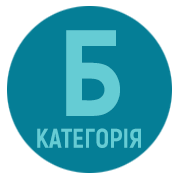Ukrainian symbolism in design
DOI:
https://doi.org/10.24195/artstudies.2025-3.21Keywords:
Ukrainian symbolism, design, national motifs, ornaments, branding, creative industry, embroidery, folk art, identity, architectureAbstract
The article is devoted to the analysis of Ukrainian symbolism in the context of modern design.The aim of the research is to study the historical origins of Ukrainian symbolism and its trans- formation in the context of modern design practices. The work examines how national motifs, ornaments and colors are used in graphic design, branding, fashion, architecture and interior, as well as in digital illustrations and multimedia products. In addition, attention is focused on the socio-cultural context of the use of Ukrainian symbolism and its influence on the formation of national identity. The research methodology is based on a comprehensive approach that com- bines historical and cultural, semiotic and design analysis. To achieve the goal, such methods as content analysis, comparison and interpretation of visual materials, as well as the study of examples of the modern use of Ukrainian symbols in creative industries are used. One of the main tasks is also to analyze the ethical aspects of the use of national symbolism in design and its role in the formation of cultural diplomacy. The novelty of the study lies in the fact that the article systematizes for the first time the experience of using traditional Ukrainian symbols in modern design, in particular in such areas as graphic design, branding, fashion, architecture and digital art. Special attention is paid to the latest approaches to combining traditional sym- bolism with current trends in visual culture, as well as the impact of these processes on the popularization of Ukrainian culture in a global context. The practical significance of the study lies in the possibility of using the results obtained to develop recommendations for the ethical and professional use of Ukrainian symbols in design projects, as well as to support initiatives in the field of cultural diplomacy. In addition, the results of the work may be useful for designers, artists, architects and other representatives of the creative industries who work with national motifs in their practice. The main results of the study confirm that Ukrainian symbols, in particular orna- ments, colors and images, are actively integrated into various areas of modern design, while maintaining their cultural and historical significance. It has been established that the modern interpretation of national symbols contributes to the formation of a positive image of Ukraine as a culturally rich state, while supporting its cultural identity in the international arena. In addition, it has been found that the use of Ukrainian symbols in fashion, architecture and interior design is gaining popularity, giving these areas new interpretations and meanings. Conclusions. It is emphasized that the effective use of Ukrainian symbols in design contributes to the preserva- tion of cultural heritage, supports national identity and promotes the development of creative industries. The use of traditional motifs in modern design is an important element of cultural diplomacy and can become a powerful tool for the further promotion of Ukrainian culture in the international arena. However, in order to preserve ethical standards and the authenticity of symbols, it is necessary to provide constant scientific and practical support for the process of adapting traditional motifs to modern design realities.
References
1. Рижова, І. С., Прусак, В. Ф., Мигаль, С. П., Рєзанова, Н. О. (2017). Дизайн середовища. Словник-довідник. Львів : Простір-М.
2. Сбітнєва, Н. Ф. (2015). Тенденції розвитку сучасного графічного дизайну: повернення до рукотворності. Вісник Харківської державної академії дизайну і мистецтв, (4), 60–66.
3. Скляренко, Н. В., Ляшевський, О. В. (2010). Сутність і призначення логотипу. Вісник Вісник Харківської державної академії дизайну і мистецтв, (6), 91–95.
4. Хмельовський, О. М. (2008). Графічний дизайн. Луцьк: Терен.
5. Niklewicz, K. (2017). We need to talk about the EU: European political advertising in the post-truth era. Brussels: Wilfried Martens Centre for European Studies.
6. Aydın, B. O., Şahin, E., Duğan, Ö. (Eds.). (2018). Public relations and advertising theories: Concepts and practices. Berlin: Peter Lang.








